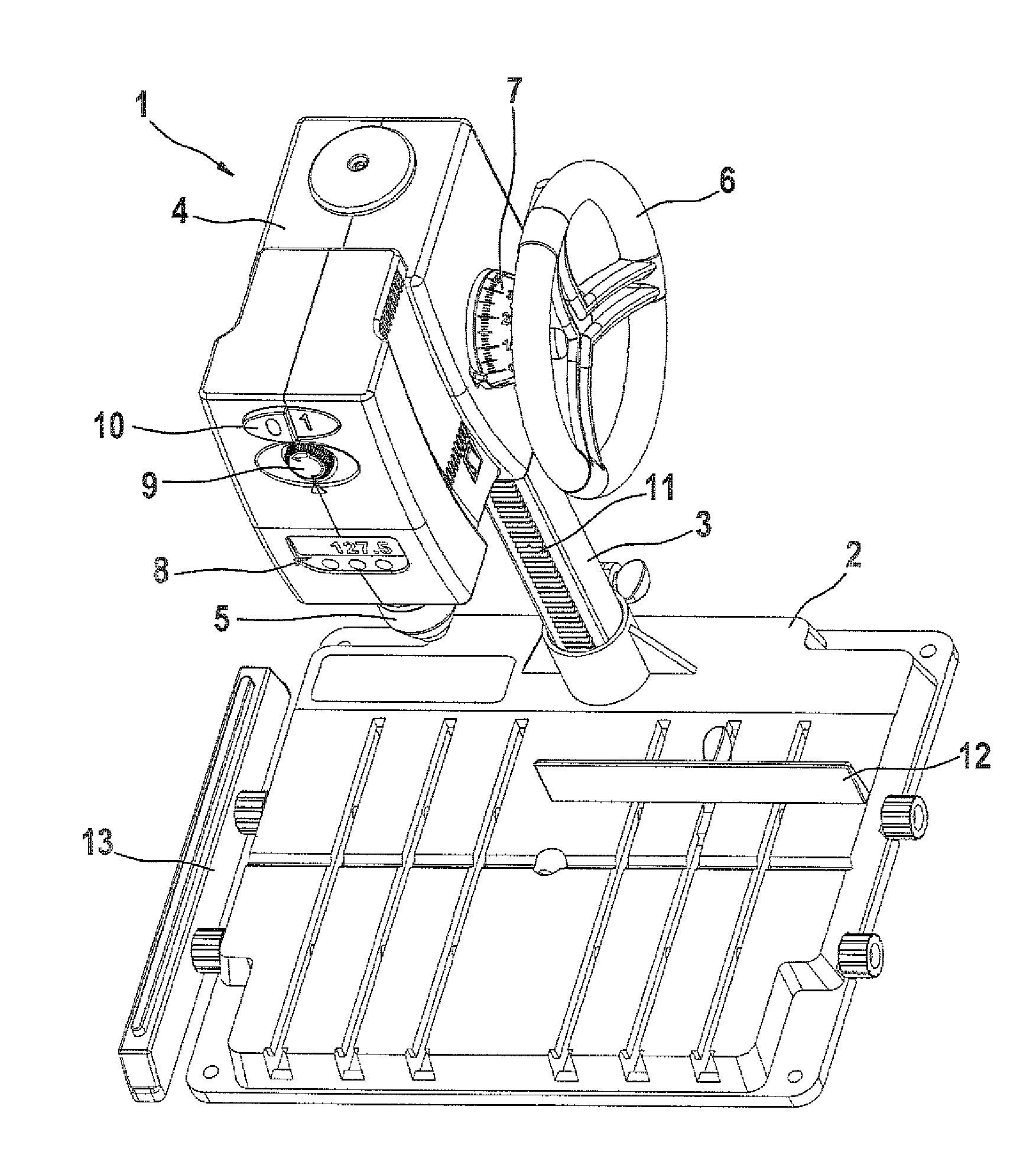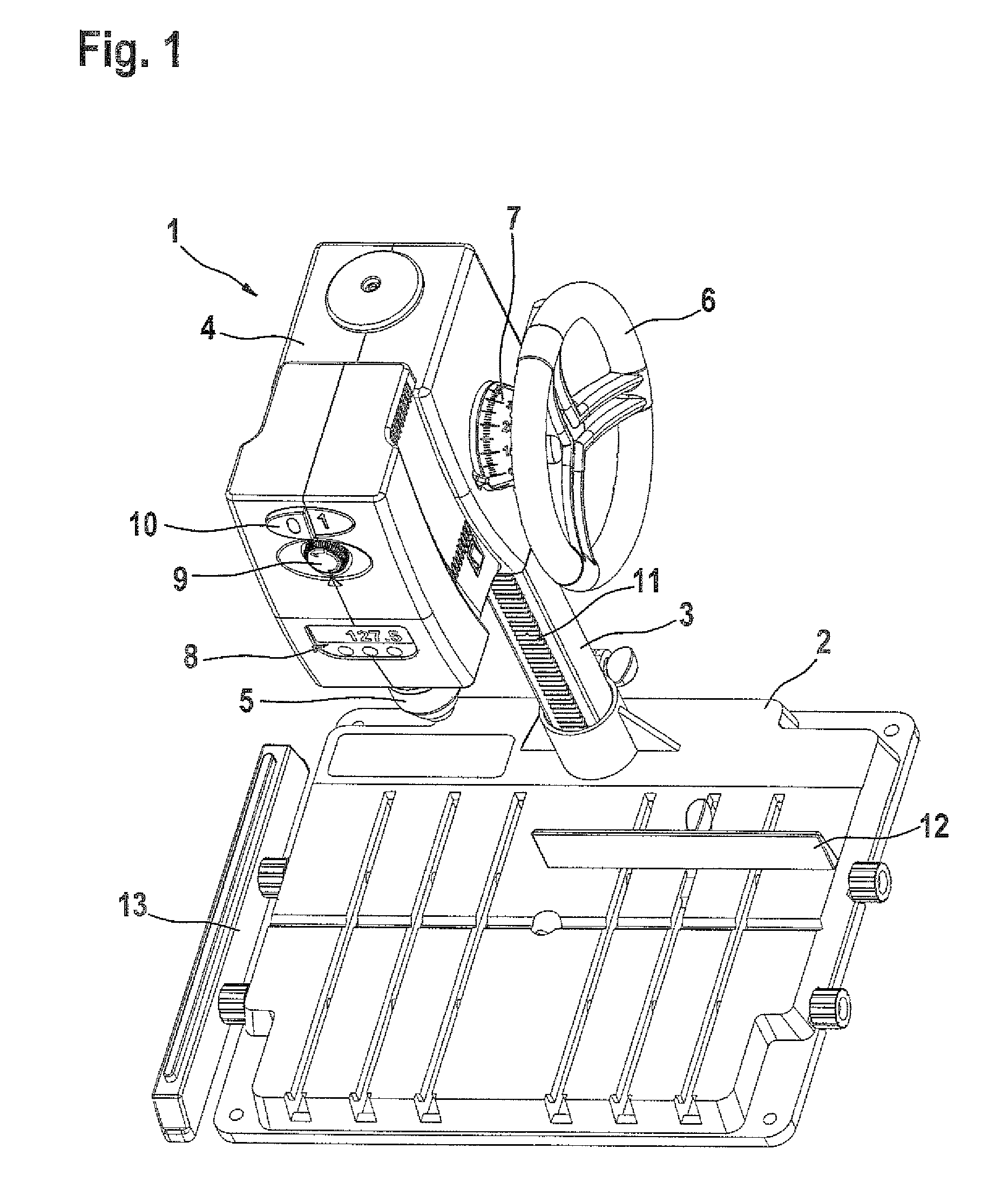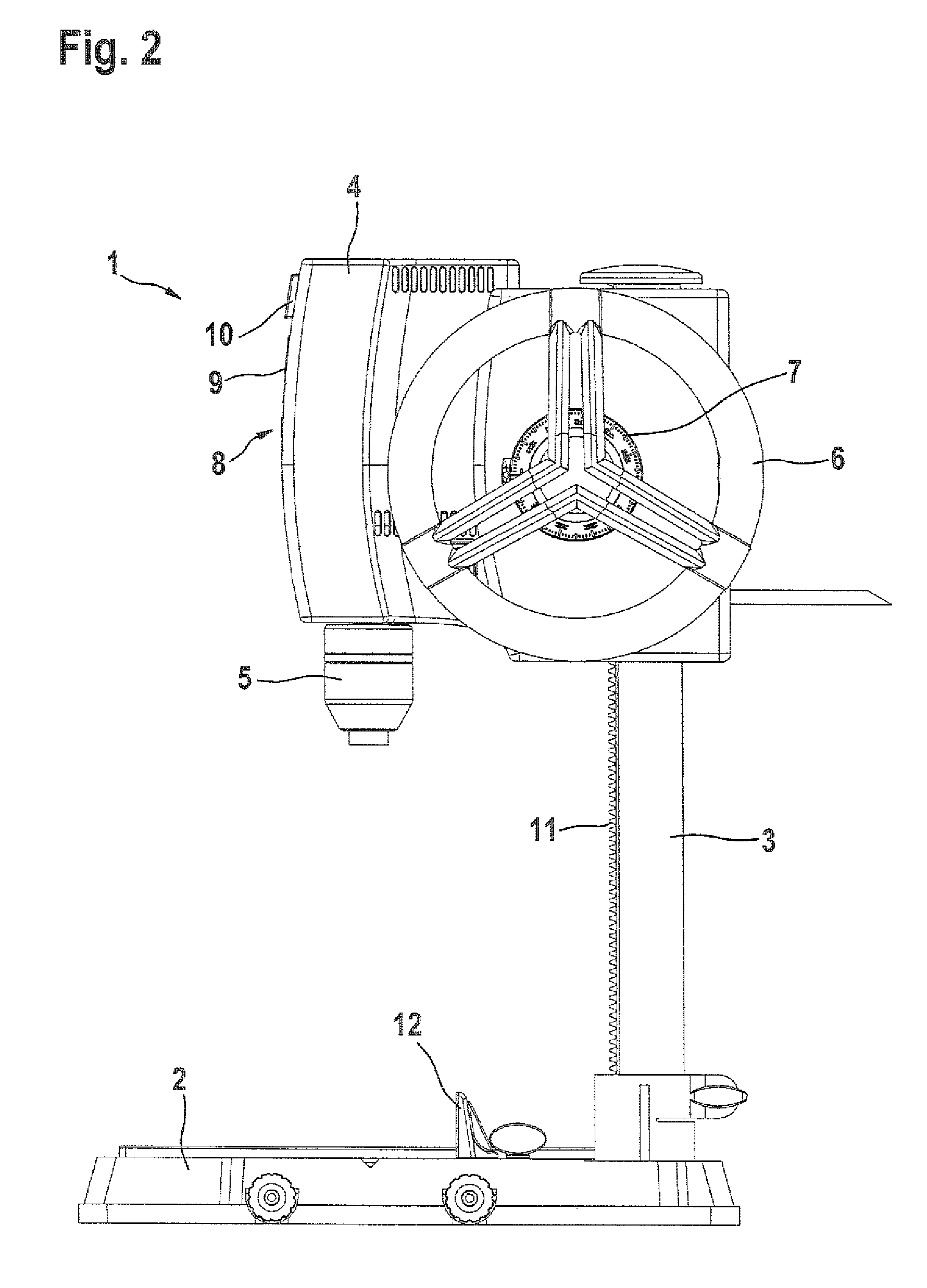Stationary power drill
a stationary power drill and power element technology, applied in the direction of drilling/boring measurement devices, portable drilling machines, manufacturing tools, etc., can solve the problems of unwanted reverse motion of the tool housing tripped by the increasing spring force of the compensation spring element, and achieve the effect of increasing the elongation of the spring element, increasing the spring force, and simplifying the structural design quite considerably
- Summary
- Abstract
- Description
- Claims
- Application Information
AI Technical Summary
Benefits of technology
Problems solved by technology
Method used
Image
Examples
Embodiment Construction
[0019]The stationary power drill 1 shown in FIGS. 1 through 3 includes a base 2, embodied as a base plate, on which a vertical guide column 3 is disposed that is the carrier of a tool housing 4 with a drill unit 5 received in the housing. The tool housing 4 is embodied as manually adjustable vertically and has a handwheel 6 that is to be actuated by the drill operator and upon the rotation of which the tool housing 4 is adjustable vertically along the guide column 3. On the handwheel 6, there is a ring scale 7 for reading out the currently set height of the tool housing.
[0020]In the front region of the tool housing 4, there is a display panel 8, embodied for instance as an LCD and on which various parameters can be displayed, such as the rpm of the drill unit 5 and the absolute position in terms of height of the tool housing. The rpm of the drill unit is meant to be set via an rpm adjuster 9 also disposed in the front region of the tool housing 4. An on / off actuation switch 10 for t...
PUM
| Property | Measurement | Unit |
|---|---|---|
| weight | aaaaa | aaaaa |
| resistance | aaaaa | aaaaa |
| height | aaaaa | aaaaa |
Abstract
Description
Claims
Application Information
 Login to View More
Login to View More - R&D
- Intellectual Property
- Life Sciences
- Materials
- Tech Scout
- Unparalleled Data Quality
- Higher Quality Content
- 60% Fewer Hallucinations
Browse by: Latest US Patents, China's latest patents, Technical Efficacy Thesaurus, Application Domain, Technology Topic, Popular Technical Reports.
© 2025 PatSnap. All rights reserved.Legal|Privacy policy|Modern Slavery Act Transparency Statement|Sitemap|About US| Contact US: help@patsnap.com



